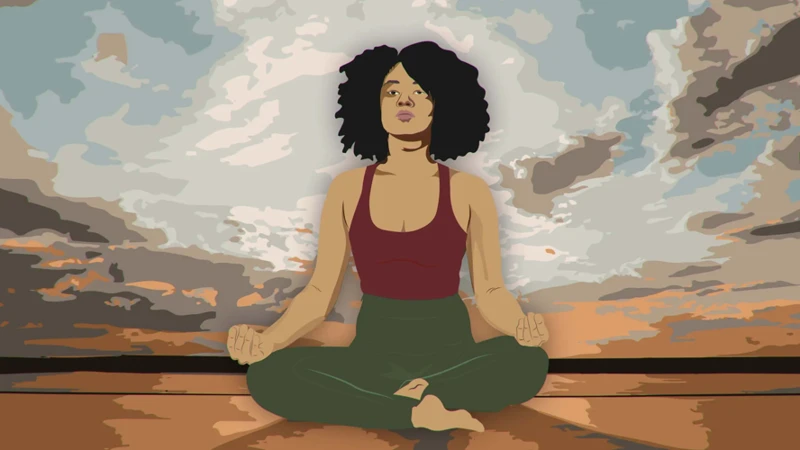Introduction
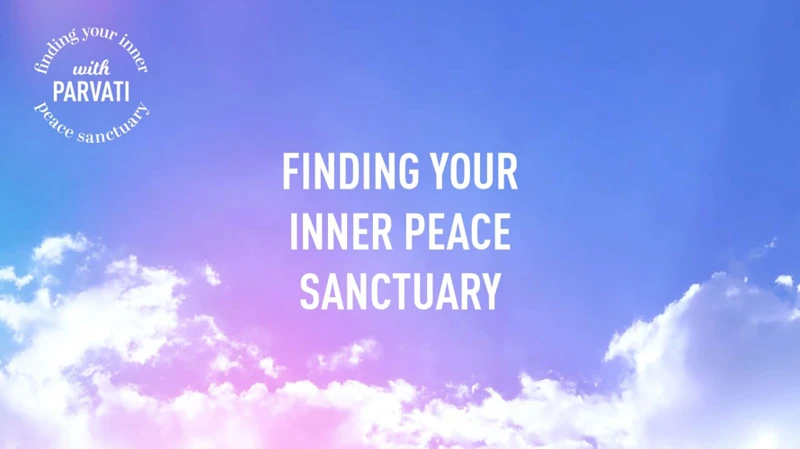
Starting a daily practice of prayer and meditation can be a powerful tool in finding your inner peace. In a world filled with hustle and bustle, it can be easy to get caught up in the chaos and lose sight of ourselves. This is where establishing a routine of prayer and meditation can help bring clarity and focus to our lives. In this article, we will explore the importance of inner peace and how daily prayer and meditation can improve our overall well-being. We will also dive into different types of meditation and provide tips on how to establish a successful daily practice. Join us on this journey to finding inner peace and tranquility.
The Importance of Inner Peace
Finding inner peace is essential to achieving balance and harmony in our lives. Inner peace is a state of mental and emotional calmness, where we feel centered and balanced, and free from stress, worry, and anxiety. It is a state of mind where we feel at ease, no matter what is happening around us.
The importance of inner peace cannot be overstated, as it affects every aspect of our lives. When we are at peace with ourselves, we can handle life’s challenges with ease, and we are better equipped to make sound decisions. Inner peace allows us to live in the moment, to enjoy life’s simple pleasures, and to appreciate the beauty around us.
However, in today’s busy world, inner peace can be difficult to achieve. We are constantly bombarded with distractions, both external and internal, that can leave us feeling stressed and overwhelmed. It is therefore essential to make a conscious effort to find inner peace.
By taking steps to establish a daily practice of prayer and meditation, we can learn to access that place of inner peace within us. Engaging in daily prayer and meditation has many benefits, including reducing stress and anxiety, improving our overall well-being, and connecting us with our spirituality.
In the next section, we will explore the various types of meditation and how they can help us find inner peace.
Defining Inner Peace
To truly understand the importance of finding inner peace through daily prayer and meditation, it’s crucial to define what inner peace is. Inner peace is not a state of mind free from stress or problems. Rather, it is a state of mind, despite the presence of stress and problems, where an individual feels calm, content, and at ease.
To help shed light on what inner peace is, consider the following table:
| What Inner Peace Is | What Inner Peace Is Not |
|---|---|
| Feeling calm and centered | Feeling numb or disconnected |
| Having a sense of purpose and direction | Feeling lost or directionless |
| Being content with oneself and life | Constantly striving for external validation and material possessions |
| Experiencing gratitude and appreciation | Taking things for granted and dwelling on negativity |
| Having inner strength and resilience | Feeling weak and easily overwhelmed |
In essence, inner peace is about finding a sense of calm and contentment within oneself, even in the face of difficult circumstances. It’s about learning to let go of negative emotions and thoughts and cultivating positive ones. By doing so, individuals can experience greater happiness, fulfillment, and well-being in life.
Benefits of Daily Prayer and Meditation
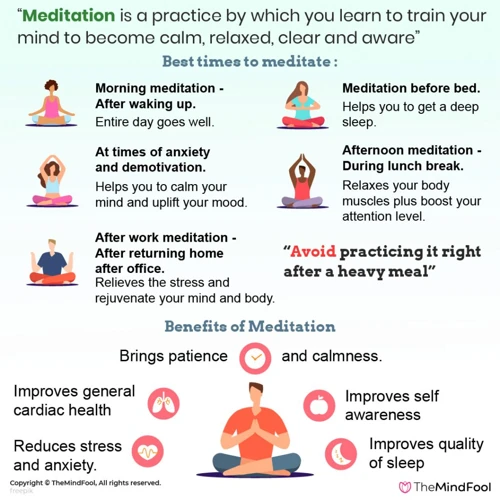
Finding inner peace is a common goal for many people who want to improve their overall wellbeing. One way to achieve this is through daily prayer and meditation. The benefits of incorporating prayer and meditation into your daily routine are numerous and can positively impact your mental, emotional and spiritual health. From reducing stress and anxiety to cultivating a deeper connection with your spirituality, the advantages of daily practice are profound. Let’s delve deeper into the many ways in which daily prayer and meditation can enhance your life.
Reducing Stress and Anxiety
Daily prayer and meditation can have a significant impact on reducing stress and anxiety. It provides a sense of calm and tranquility, helping individuals to clear their mind of negative thoughts. Here are a few benefits of prayer and meditation for reducing stress and anxiety:
- Lowering Cortisol Levels: Cortisol is known as the “stress hormone” that is released by the body during times of stress. Studies have shown that meditation can help to lower the levels of cortisol in the body, leading to a decrease in overall stress levels.
- Improving Sleep Quality: Prayer and meditation before bedtime can help calm the mind and promote better sleep quality. Improved sleep patterns can lead to a reduction in stress and anxiety, as well as an increase in productivity and energy levels.
- Increased Self-Awareness: Meditation can help increase self-awareness, allowing individuals to identify the triggers that cause stress and anxiety. This can help individuals avoid or manage stressful situations more effectively.
- Mental Clarity: Prayer and meditation can help clear the mind of negative thoughts and feelings, allowing individuals to focus on the present moment rather than worrying about the past or future. This can lead to a greater sense of mental clarity and calm.
Daily prayer and meditation can have a profound impact on reducing stress and anxiety, leading to a greater sense of peace and well-being.
Improving Overall Well-Being
One of the biggest benefits of daily prayer and meditation is improving overall well-being. This means not only improving physical health but also mental and emotional health. Let’s take a look at some specific ways daily prayer and meditation can improve your overall well-being:
| Benefit | Description |
|---|---|
| Lowering Blood Pressure | Daily prayer and meditation have been shown to lower blood pressure, reducing the risk of heart disease and stroke. |
| Boosting Immune System | Research has found that daily meditation can boost the immune system, leading to a reduced likelihood of illness and improved overall health. |
| Reducing Inflammation | Inflammation is linked to several chronic diseases, including arthritis and cancer. Daily meditation has been shown to reduce inflammation in the body. |
| Improving Emotional Regulation | Prayer and meditation can help you regulate your emotions better, reducing feelings of anxiety and depression. |
| Increasing Self-Awareness | Meditation can help you become more self-aware, allowing you to make more conscious decisions about your actions and behaviors. |
Daily prayer and meditation can lead to improved physical health and emotional well-being. It’s a great way to take care of yourself and invest in your overall health and happiness.
Connecting with Your Spirituality
Connecting with your spirituality is one of the most significant benefits of daily prayer and meditation. By taking time each day for introspection and mindful reflection, you can connect with your inner self and the divine. Here are some ways daily prayer and meditation can help you deepen your spiritual connection:
1. Increased Awareness: Practicing meditation can help you become more aware of your thoughts, feelings, and actions. By becoming aware of your habits and patterns, you can begin to break free from negative behaviors and cultivate positive ones that align with your spiritual values.
2. Greater Clarity: Prayer and meditation can help you gain a greater sense of clarity about your life purpose and path. As you align yourself with your spiritual center, you may find that you have a clearer understanding of your goals and aspirations.
3. Inner Peace: Connecting with your spirituality can bring a sense of inner peace and calmness that extends beyond your meditation practice. This feeling of peace can be a guiding force as you navigate the ups and downs of daily life.
4. Sense of Connection: Daily prayer and meditation can help you feel more connected to the world around you and to the divine. You may begin to feel a sense of oneness with all people and things, which can be a deeply spiritual experience.
5. Deeper Faith: As you deepen your spiritual connection, you may find that your faith in a higher power grows stronger. Even if you don’t subscribe to a particular religion, a daily practice of prayer and meditation can help you cultivate faith in something greater than yourself.
Daily prayer and meditation can help you connect with your spirituality by increasing your awareness, promoting clarity, bringing inner peace, fostering a sense of connection, and deepening your faith. By taking just a few minutes each day for these practices, you can cultivate a deeper understanding of yourself and your place in the world.
Types of Meditation
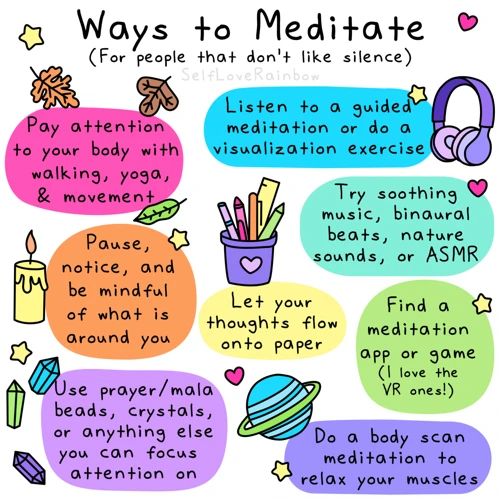
As you embark on your journey towards inner peace, it’s important to explore different techniques that can help calm your mind and quiet your thoughts. Meditation has been practiced for thousands of years and has evolved into various forms, each with its own unique approach and benefits. By incorporating different types of meditation into your daily routine, you can discover which method resonates with you the most and enhances your overall well-being. Let’s take a closer look at some of the most popular forms of meditation.
Mindfulness Meditation
One of the most popular forms of meditation is mindfulness meditation. It involves being fully present and aware of your thoughts, feelings, and surroundings. The goal is to observe these things without judgment or attachment, allowing you to gain clarity and peace of mind.
During mindfulness meditation, you will typically sit in a comfortable position with your eyes closed. You will focus on your breath, bringing your attention to the sensations of inhaling and exhaling. When your mind inevitably wanders, you will gently redirect your focus back to your breath. This practice builds the muscle of mindfulness and helps us become aware of our thoughts.
One variation of mindfulness meditation is body scan meditation, where you bring awareness to different parts of the body and observe any sensations without judgment. This can help increase bodily awareness and reduce tension.
Another variation is loving-kindness meditation, where you focus on thoughts of love and kindness towards yourself and others. This practice can cultivate positive emotions and increase compassion.
Here is a table summarizing some key aspects of mindfulness meditation:
| Aspect | Description |
|---|---|
| Goal | Being present and aware without judgment or attachment |
| Position | Sitting in a comfortable position with eyes closed |
| Focal Point | Observing breath or bodily sensations |
| Variations | Body scan meditation, loving-kindness meditation |
| Benefits | Reduced stress and anxiety, increased focus and clarity, increased emotional regulation |
Mindfulness meditation is a valuable tool for cultivating inner peace and awareness. With practice, this technique can help reduce stress and anxiety, increase focus and clarity, and promote emotional regulation.
Transcendental Meditation
Transcendental Meditation, often referred to as TM, is a technique that involves repeating a mantra or phrase silently to yourself. It is a form of meditation that has gained popularity due to its simplicity and effectiveness in promoting relaxation and reducing stress.
What sets TM apart is its emphasis on the use of a personalized mantra. This is a specific sound or word that is chosen for each individual practitioner based on various factors such as age, gender, and personal characteristics. The mantra is not a word or phrase with any particular meaning, but rather serves as a mental focal point for the practice.
During a TM session, the practitioner sits comfortably with their eyes closed and repeats the mantra silently to themselves for 20 minutes at a time. The goal is to allow the mind to become more calm and tranquil, and to ultimately reach a state of deep inner peace and relaxation.
Research has shown that regular practice of TM can have numerous benefits for both the mind and body. Studies have found that it can help to lower blood pressure, reduce symptoms of anxiety and depression, and even improve brain function.
It is important to note that TM is typically taught by a certified teacher and may involve a fee for instruction. Once the technique is learned, it can be practiced independently on a daily basis.
If you are interested in learning more about TM, it is recommended that you seek out a certified instructor or attend an introductory session to see if the technique is right for you.
Loving-Kindness Meditation
One type of meditation that has gained popularity in recent years is loving-kindness meditation. This practice involves generating feelings of love, compassion, and kindness towards oneself and others. It is a great way to cultivate a more positive and loving attitude towards oneself and the world.
To start a loving-kindness meditation practice, find a quiet and comfortable space to sit comfortably for 10-30 minutes. Begin by taking a few deep breaths to relax and center yourself.
The following are the basic steps for this type of meditation:
- Setting an intention: Begin by setting your intention for the meditation. This intention can be to cultivate feelings of love, compassion, and kindness towards oneself or others.
- Visualizing a loved one: Picture someone close to you who you have warm and loving feelings towards. This can be a family member, friend, or even a pet.
- Sending love and kindness: Focus on sending positive and loving energy towards this person. Picture them happy and healthy, surrounded by love and support.
- Expanding the circle: Once you feel grounded in your feelings for your loved one, begin to expand the circle of love and kindness to include others in your life. This can be people you know well or even strangers or those whom you have negative feelings.
- Sending love and kindness outwards: Finally, imagine sending this love and kindness outwards, to the entire world. Visualize the world being filled with love and positivity, and imagine that everyone is happy, safe, and surrounded by love and support.
Practicing loving-kindness meditation can help you build empathy and compassion, and reduce feelings of anger and negativity. It can also help you cultivate a more positive outlook on life, and foster a greater sense of interconnectedness with others. With practice, this type of meditation can become a powerful tool for inner peace and well-being.
Yoga Meditation
Yoga meditation is a type of meditation that incorporates physical movement alongside focused breathing and mindfulness. It involves a series of poses and stretches that help the body to relax and release tension, while also calming the mind and improving overall well-being.
The benefits of yoga meditation are numerous:
- Increased flexibility and strength
- Improved balance and coordination
- Reduced stress and anxiety
- Enhanced focus and concentration
- A greater sense of inner peace and connection to the self
Practicing yoga meditation:
- Begin by finding a quiet, comfortable space where you can move freely without interruption.
- Set an intention for your practice, such as relaxation, stress relief, or self-discovery.
- Start by warming up with some gentle stretches and movements, focusing on your breath and being present in your body.
- Move into a series of poses or asanas, holding each one for a few breaths and allowing your body to release any tension or tightness.
- Throughout your practice, pay attention to your breath and allow it to guide your movements and keep you centered.
- After finishing your poses, come to a comfortable seated position and practice a few minutes of deep breathing or meditation to close your practice.
Integrating yoga meditation into your daily routine:
- Commit to practicing yoga meditation for just a few minutes each day, gradually increasing the amount of time as you become more comfortable.
- Use a yoga mat or blanket to create a dedicated space for your practice, so you can easily access it whenever you need to unwind.
- Consider joining a yoga class or finding an online resource to guide you through your practice.
- Be patient with yourself – like any new skill, it takes time and practice to reap the full benefits of yoga meditation.
By incorporating yoga meditation into your daily routine, you can improve your physical health and mental well-being, while also cultivating a deeper sense of inner peace and connection to the self.
How to Establish a Daily Practice
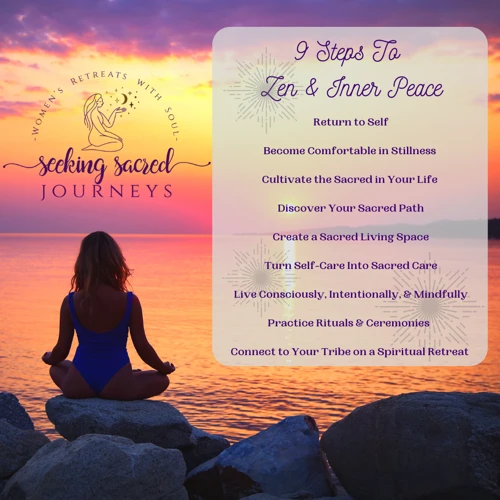
Establishing a consistent daily prayer and meditation practice can have a profound impact on your overall well-being and spiritual growth. However, getting started can be challenging without a clear plan in place. In this section, we will explore some practical strategies for infusing your daily routine with intentional moments of mindfulness and reflection. By following these tips, you can create an accessible and sustainable practice that fuels your inner peace and promotes a deeper connection with your spirituality. Let’s dive in.
Set Realistic Goals
When starting a daily practice of prayer and meditation, it’s important to set realistic goals to ensure that you are able to stick with it over time. Here are some tips for setting attainable goals:
- Start Small: Don’t try to meditate for an hour every day if you’ve never meditated before. Start with just a few minutes and gradually increase the time.
- Be Consistent: It’s better to meditate for 5 minutes every day than to meditate for an hour once a week. Consistency is key.
- Find a Time: Choose a time of day when you are most likely to be able to set aside a few minutes for prayer and meditation. Some people find that the morning works best, while others prefer to meditate before bed.
- Set Realistic Expectations: You’re not going to achieve inner peace overnight. Be patient with yourself and understand that progress will come with time and practice.
- Track Your Progress: Use a journal or app to keep track of your meditation sessions and any insights or breakthroughs you experience. This will help you stay motivated and see how far you’ve come.
Remember, the most important thing is to start small and be consistent. Over time, your daily practice will become a habit and you’ll be able to increase the length and intensity of your meditations.
Creating a Sacred Space
One important aspect of establishing a daily prayer and meditation routine involves creating a sacred space where you can focus and connect with your inner self. This space can be any area in your home, office or even a special place in nature that brings you a sense of calm.
To create your own sacred space, consider the following steps:
- Cleanse the space: Clear out any clutter and make sure the space is clean and tidy before setting it up.
- Choose a focal point: This can be a candle, a plant or a piece of art that holds significance to you.
- Incorporate calming elements: Adding elements like pillows or blankets can help create a cozy, relaxed atmosphere.
- Add spiritual items: These can include crystals, statues or religious symbols that hold personal meaning.
- Set the tone: Consider using essential oils or lighting candles to create an ambiance that is conducive to relaxation and focus.
Remember that this space should be somewhere you feel comfortable and safe. It’s important to choose items that resonate with you and bring a sense of peace and tranquility. With a dedicated sacred space, you will have a physical reminder to make self-care a priority in your daily routine.
Developing a Routine
Developing a routine for daily prayer and meditation is crucial for establishing a consistent practice. It’s essential to set aside time each day for this practice, making it a non-negotiable part of your routine. Here are some tips for developing a routine:
| Tip | Description |
|---|---|
| Choose a specific time of day | Pick a time when you are least likely to be interrupted. This could be early in the morning, during your lunch break, or in the evening before bed. |
| Start small | Don’t feel like you have to meditate for an hour every day. Start with just a few minutes and gradually increase the amount of time you spend in meditation. |
| Use reminders | Set reminders on your phone or use sticky notes as a visual cue to remind you to meditate. |
| Be consistent | Try to practice at the same time each day. Consistency will help you establish the habit and make it a part of your daily routine. |
| Be flexible | While it’s important to be consistent, don’t beat yourself up if you miss a day. Instead, just get back on track the next day. |
| Track your progress | Use a journal or an app to track your progress. This can be a great way to see how far you’ve come and stay motivated. |
By developing a routine for daily prayer and meditation, you’ll not only be more likely to stick with it, but you’ll also begin to experience the benefits of a consistent practice.
Combining Prayer and Meditation
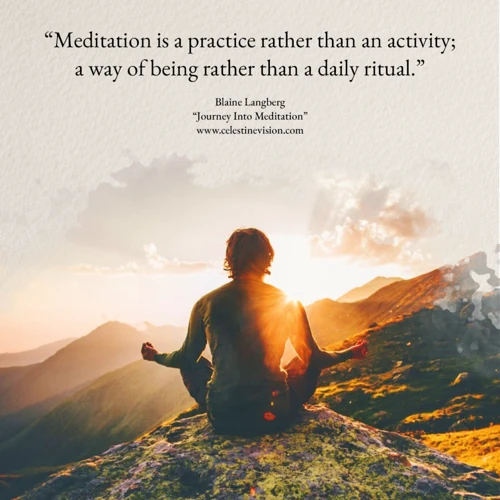
As you continue your journey towards inner peace through daily prayer and meditation, you may wonder if there are ways to enhance the experience. Fortunately, there are techniques you can use to combine prayer and meditation for a more profound and meaningful practice. By incorporating positive affirmations and visualization techniques, you can further connect with your spirituality and manifest your desires. In this section, we explore practical tips for combining prayer and meditation to take your practice to the next level.
The Power of Positive Affirmations
Positive affirmations are one way to enhance the benefits of daily prayer and meditation. Affirmations are words or phrases that are repeated to oneself to encourage a positive mindset and outlook. They can help to increase self-esteem, reduce negative self-talk and alter limiting beliefs.
To get started with positive affirmations, it’s helpful to identify areas of your life where you would like to see improvement. This could be related to relationships, career, health, or any other aspect of life. Once you have identified these areas, come up with affirmations that are specific to your goals.
| Area of Improvement | Possible Affirmations |
|---|---|
| Relationships | “I am worthy of love and respect”, “I am surrounded by supportive and loving people” |
| Career | “I am skilled and capable in my work”, “My contributions to my company are valued and appreciated” |
| Health | “I welcome a healthy and vibrant body”, “I am capable of making choices that benefit my health and well-being” |
Once you have determined your affirmations, incorporate them into your daily routine. For example, recite them during your morning meditation or write them down in a journal. The repetition of these affirmations can strengthen the neural pathways in your brain and make positive thinking a habit.
In addition to incorporating affirmations into your daily practice, you can also combine them with visualization techniques. Visualizing yourself achieving your goals while reciting your affirmations can help to make them a reality.
Incorporating positive affirmations into your daily prayer and meditation practice can help to further enhance your journey towards inner peace and personal growth.
Visualization and Manifestation Techniques
Visualization and manifestation techniques are powerful tools to use in combination with daily prayer and meditation. Here are some techniques to try:
- Create a Vision Board: A vision board is a visual representation of the things you want to attract into your life. You can create a physical board with pictures and words or a digital one on your computer.
- Practice Creative Visualization: This involves using your imagination to create a mental image of what you want to achieve. Visualize yourself already in possession of what you desire and feel the emotions associated with it.
- Use Affirmations: Affirmations are positive statements that you repeat to yourself to reinforce positive beliefs. For example, “I am worthy of love and success,” or “I am capable of achieving my dreams.”
- Practice Gratitude: Focusing on what you’re grateful for can attract more positivity into your life. Take time each day to think about what you’re thankful for and express gratitude for those things.
- Write in a Manifestation Journal: Writing in a manifestation journal involves writing out your goals and desires as if you’ve already achieved them. This helps to shift your mindset to one of abundance and positivity.
By incorporating visualization and manifestation techniques into your daily practice, you can enhance your ability to attract what you want into your life. Remember to stay positive and focus on your goals, and trust that the universe will provide.
Troubleshooting Your Practice

As much as we want our daily prayer and meditation practice to be smooth sailing, the reality is that we may encounter hiccups along the way. It’s important to approach these obstacles with understanding and patience instead of getting discouraged and giving up on the practice entirely. In this section, we will explore some common roadblocks that may arise and provide tips and resources to help troubleshoot your practice.
Common Obstacles to Overcome
Embarking on a daily prayer and meditation practice can be a transformative journey, however, like any journey, there may be obstacles that arise along the way. Here are some common obstacles to overcome:
- Busyness: Many people struggle to find the time to establish a daily practice because of their busy schedules. It’s important to prioritize your mental and emotional well-being, even if it means waking up a little earlier or setting aside time during your lunch break.
- Inconsistency: Starting a new habit can be challenging, especially when it comes to daily practices. It’s important to establish a routine that works for you and stick to it. Remember, it’s about progress, not perfection.
- Physical Discomfort: Finding a comfortable position for meditation can be difficult for some people, especially those with physical limitations or disabilities. Experiment with different positions, such as sitting in a chair, using a cushion, or lying down.
- Mental Distractions: Even experienced meditators can struggle with an active mind. It’s important to acknowledge your thoughts without judgment and simply let them pass by, returning your focus to your breath or mantra.
- Resistance: Sometimes the resistance to starting or maintaining a daily practice can come from within. It’s important to explore any underlying fears or limiting beliefs that may be holding you back and find ways to overcome them.
Learning to navigate and overcome these common obstacles can help you establish a consistent and fulfilling prayer and meditation practice. Don’t get discouraged if you encounter these challenges, know that they are simply opportunities for growth and self-discovery.
Guided Meditation Resources
When establishing your daily meditation practice, guided meditations can be a helpful tool. Guided meditations provide step-by-step instructions and can help you stay focused and on track. Below are some guided meditation resources to consider:
- Headspace: This popular app offers guided meditations for beginners and experienced meditators alike. With a variety of themes to choose from, Headspace can help you reduce stress, improve focus, and sleep better.
- Calm: Another popular meditation app, Calm offers guided meditations, breathing exercises, and bedtime stories to help you relax and improve your sleep. You can choose from various themes, such as gratitude, self-esteem, and mindfulness.
- Mindful: This website offers a variety of guided meditations, including short meditations for beginners and longer meditations for experienced practitioners. You can browse meditations by theme, such as stress, anxiety, and relationships.
- Insight Timer: This app offers guided meditations led by experienced teachers around the world. You can choose from various lengths and themes, such as self-love, forgiveness, and inner peace. In addition to guided meditations, Insight Timer also offers a timer for silent meditation practice.
- YouTube: YouTube is a great resource for finding guided meditation videos for free. You can search for specific themes or teachers, and there are many options to choose from. Some popular channels include The Honest Guys, Jason Stephenson, and Michael Sealey.
Remember that everyone’s meditation practice is unique, so it’s important to find what works best for you. Don’t be afraid to try different resources and styles of meditation until you find what resonates with you.
Working with a Spiritual Advisor or Mentor
Working with a Spiritual Advisor or Mentor
If you find that you’re struggling to establish or maintain a daily practice, or just need some guidance and support along the way, consider working with a spiritual advisor or mentor.
A spiritual advisor or mentor can provide personalized guidance based on their own experience and expertise. They can also offer accountability and motivation to keep you on track with your practice.
Here are some tips for finding and working with a spiritual advisor or mentor:
- Do your research: Look for someone with a background in the type of meditation or spirituality that resonates with you. Ask for recommendations from friends or family members who have worked with a spiritual advisor or mentor.
- Set expectations: Be clear about your goals and what you hope to gain from the relationship. Ask your potential advisor or mentor about their approach and what they can offer you.
- Establish boundaries: Set clear boundaries around communication and scheduling to ensure that your relationship is sustainable and respectful of both of your needs and time.
- Be open and receptive: Be willing to try new techniques or suggestions from your advisor or mentor, and communicate openly about what’s working and what’s not. Remember that this is a collaborative partnership, and you have agency in shaping the relationship and your practice.
Remember that working with a spiritual advisor or mentor is just one option for support and guidance in your practice. There are many resources available, including books, podcasts, and online communities. The most important thing is to find the support that resonates with you and helps you establish and maintain a daily practice that brings you inner peace and well-being.
Maintaining Inner Peace Throughout the Day
As we go through our day-to-day lives, it can be easy to lose sight of the inner peace and tranquility we cultivate through daily prayer and meditation. However, there are simple yet powerful techniques that can help us maintain this sense of calmness and centeredness throughout the day. By using mindfulness techniques and integrating prayer and meditation into our daily routines, we can continue to nurture our inner peace and carry it with us no matter where we go or what challenges we may face. Let’s explore some practical strategies for maintaining inner peace throughout the day.
Using Mindfulness Techniques
One effective way to maintain inner peace throughout the day is by using mindfulness techniques. Mindfulness is the practice of being present in the moment and fully engaged with your surroundings. By practicing mindfulness, you can reduce stress and anxiety, improve your overall well-being, and connect with your spirituality on a deeper level.
Here are some mindfulness techniques you can try:
| Technique | Description |
|---|---|
| Deep breathing | Take a few slow, deep breaths and focus on the sensation of the air moving in and out of your body. |
| Body scan | Lie down and focus on each part of your body, one at a time, relaxing each area as you go. |
| Sensory awareness | Focus on one of your senses and notice everything you can about it in that moment. |
| Gratitude | Think of something you’re grateful for and take a moment to fully appreciate it. |
By incorporating these and other mindfulness techniques into your daily routine, you can improve your overall sense of well-being and stay connected to your spiritual side. It’s important to remember that mindfulness is not a one-time practice, but rather a lifelong journey of self-discovery and personal growth. So take the time to nurture your inner peace every day, and you’ll see the benefits in every area of your life.
Integrating Prayer and Meditation Into Your Daily Life
Integrating prayer and meditation into your daily life is essential for maintaining inner peace throughout the day. Here are some actionable tips to help you make this a part of your routine:
- Start your day with gratitude: Take a few moments each morning to express gratitude for the blessings in your life. This could be anything from the sun shining outside to the support of loved ones. Cultivating a mindset of gratitude can help set the tone for a positive day ahead.
- Take breaks throughout the day: It can be easy to get swept up in the busy-ness of daily life, but taking breaks to meditate or say a prayer can help to ground you and keep stress at bay. Even just a few minutes of deep breathing or silent contemplation can make a difference.
- Engage in mindful activities: You don’t have to set aside large chunks of time for meditation or prayer. Instead, try incorporating mindful activities into your daily routine. This could include things like taking a nature walk, doing yoga, or even washing dishes mindfully.
- Set reminders: If you tend to forget to practice mindfulness throughout the day, try setting reminders for yourself. You could use a phone app, a sticky note on your computer, or even set an alarm on your watch. The key is to find a method that works for you and stick with it.
- Simplify your life: Sometimes, the best way to integrate prayer and meditation into your daily life is to simply make more time for it. This may mean saying no to certain commitments or cutting back on activities that don’t bring you joy. By simplifying your life, you can create more space for the things that matter most.
By following these tips and finding ways to make prayer and meditation a daily habit, you can experience greater inner peace and well-being. Remember, it’s a journey, so be patient with yourself and don’t give up if you encounter setbacks along the way.
Conclusion
As we come to the end of our journey towards inner peace through daily prayer and meditation, it is time to reflect on the progress we have made. Through this practice, we have learned to calm our minds, reduce stress and anxiety, and connect with our spirituality. We have explored various types of meditation and discovered the power of positive affirmations and visualization techniques. However, the journey towards inner peace is never truly over, as it requires ongoing dedication and effort to maintain. In this final section, we will discuss some ways to continue our practice and maintain inner peace throughout our daily lives.
Final Thoughts
As we conclude this exploration of finding inner peace through daily prayer and meditation, it’s important to remember that this is a journey, not a destination. It takes time and commitment to establish a daily practice, but the benefits are immeasurable. Remember that inner peace is not the absence of stress or chaos, but rather a state of being grounded and centered, even in the midst of life’s challenges.
Keep in mind that there is no one-size-fits-all approach to prayer and meditation. It’s important to experiment with different techniques and find what resonates with you personally. Try different types of meditation, such as mindfulness, transcendental, loving-kindness, or yoga meditation, and be open to what comes up for you.
Setting realistic goals and developing a routine are key to establishing a daily practice. Remember to start small and build gradually. Creating a sacred space where you can practice in peace is also helpful, as is working with a spiritual advisor or mentor if you need guidance or support.
It can also be helpful to combine prayer and meditation with positive affirmations and manifestation techniques. Remember that what you focus on expands, so use your thoughts and words to direct your energy towards positivity and abundance.
Finally, remember that inner peace is not limited to your meditation practice. It’s a state of being that can be maintained throughout the day with mindfulness techniques and by integrating prayer and meditation into your daily life. Stay committed to your practice and remember that each day is a new opportunity to connect with your spirituality and find inner peace.
Frequently Asked Questions
How long should I meditate each day?
It is recommended to start with just 5-10 minutes a day and gradually work your way up to longer sessions.
Do I have to sit in a specific position to meditate?
No, you can sit cross-legged or on a chair, as long as you are comfortable and able to maintain a straight spine.
Can prayer and meditation be practiced together?
Absolutely, prayer and meditation can complement each other and be practiced in harmony.
What are some common obstacles to establishing a daily practice?
Procrastination, difficulty concentrating, and lack of discipline are some common obstacles to establishing a consistent practice.
How can visualization techniques enhance my meditation practice?
Visualization techniques can help focus the mind and promote relaxation, leading to a more effective meditation practice.
Do I need to be religious to practice meditation and prayer?
No, meditation and prayer can be practiced by anyone, regardless of religious or spiritual beliefs.
What resources are available for guided meditation?
There are many apps and websites offering guided meditations, such as Headspace, Calm, and Insight Timer.
Is meditation safe for everyone to practice?
For most people, meditation is a safe and beneficial practice. However, it may not be suitable for those with certain mental health conditions. Consult with a healthcare professional if you have any concerns.
Can meditation help with physical pain?
Research has shown that meditation can help reduce chronic pain and improve overall well-being.
How can mindfulness techniques be applied in daily life?
By practicing mindfulness techniques throughout the day, such as focusing on the present moment and taking deep breaths, one can increase their sense of inner peace and reduce stress levels.

